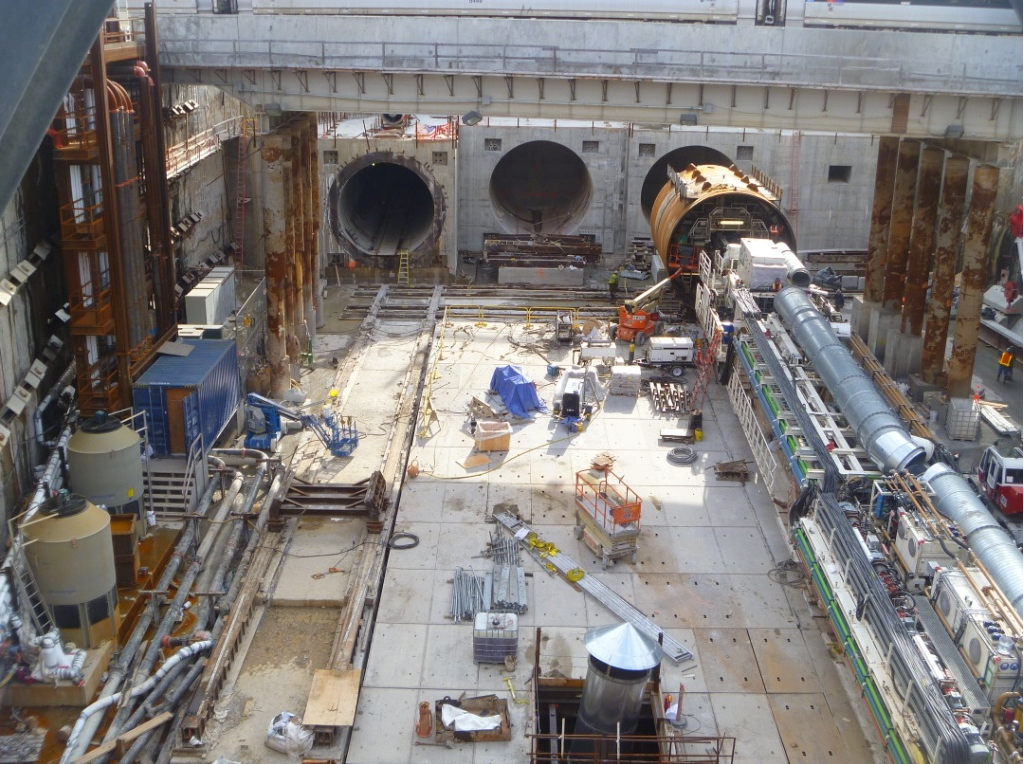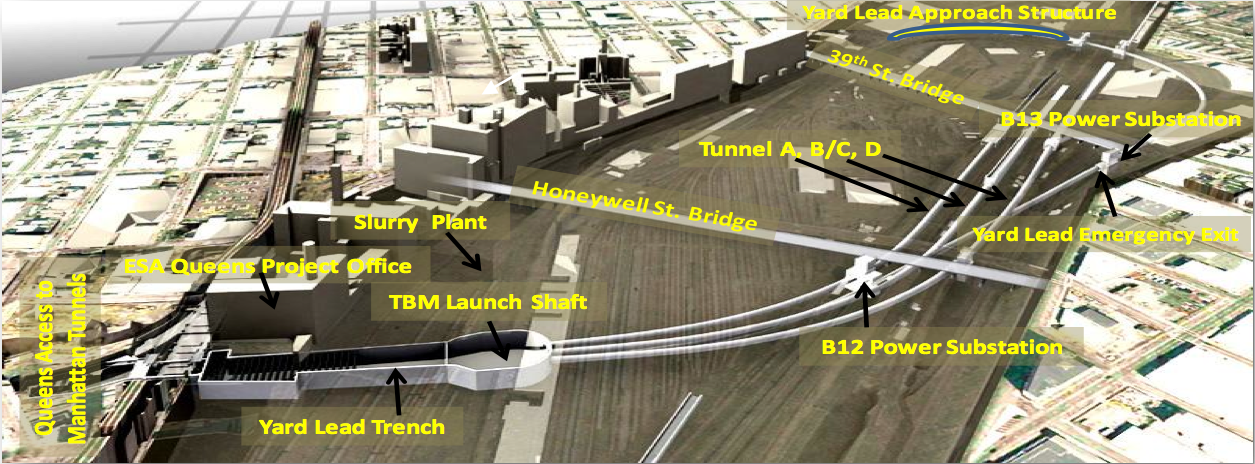East Side Access Completes Third Queens Tunnel Ahead of Schedule

Last night, crews working on the MTA’s East Side Access project brought a 642-ton tunnel boring machine to a halt underneath Sunnyside Yard in Queens seven weeks ahead of schedule, completing the third of four tunnels the MTA is building in Queens. The machine, named T.E.S.S. in March 2011 by sixth graders from I.S. 204 in Long Island City, will be temporarily entombed underground until the tunnel can be connected to the busy LIRR Main Line tracks above it.
Trains using this tunnel will be traveling eastbound from Grand Central Terminal toward Long Island. They will use it to merge onto the LIRR Main Line eastbound tracks that lead to Jamaica and Port Washington. The machine began building the tunnel on March 26, 2012. "We are delighted to complete this important milestone," said MTA Chairman Joseph J. Lhota. "Each piece of the project that we bring in ahead of schedule means we can dedicate resources to those parts of the project that most need attention."

The machine that built this tunnel had earlier completed its westbound twin last December. Another tunnel boring machine, named Molina by the I.S. 204 students, completed a tunnel in February that will lead from Grand Central directly into Sunnyside Yard. Earlier this month, Molina began excavating a reversible tunnel connecting Grand Central to eastbound and westbound Main Line tracks. That tunnel is to be completed in August. The production rates of these tunnel boring machines have generally been higher than expected. Digging in soft earth in Queens is unlike tunneling in Manhattan bedrock. The machines in Queens build the concrete tunnel walls as they progress, giving the tunnels shape and strength at the same time that they excavate the ground from beneath busy railroad tracks. In digging this eastbound tunnel, the machine named T.E.S.S. (for Tunnel Excavation Sunny Side) installed 441 precast, segmented concrete rings. It excavated 875,169 cubic feet of soil over nine weeks as it built the 2,200-foot-long, 22.5-foot diameter tunnel. The tunnel boring machines used to build the East Side Access project’s Manhattan tunnels and caverns began in September 2007 and completed their work in June 2011. The MTA has recently used seven separate tunnel boring machines to excavate tunnels for the East Side Access project, the Second Avenue Subway, and the extension of the 7 subway line. When Molina concludes its work on the reversible tunnel this summer, it will wrap up the last activity undertaken by all of these machines.



